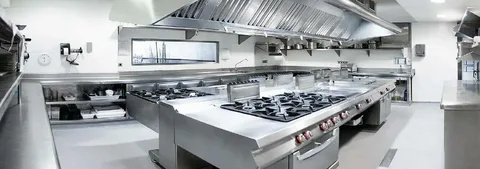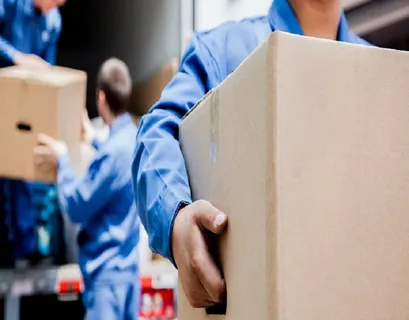The world of commercial kitchens is evolving rapidly. Chefs and restaurant owners constantly seek to improve efficiency while enhancing their culinary creations. As technology advances, so does the Commercial Kitchen Equipment that fuels these innovations. New trends are reshaping how food is prepared and served in restaurants worldwide, from smart ovens to energy-efficient appliances. These advancements not only save time but also reduce waste and enhance flavours. With customer expectations continually rising, staying ahead of the curve has become essential for any successful kitchen operation.
The Role of Smart Technology in Modern Commercial Kitchens
Innovative technology is revolutionizing commercial kitchens, enhancing efficiency and precision. With connected devices, chefs can remotely monitor cooking processes and adjust temperatures via smartphone apps. This level of control allows for consistent results, minimizing human error.
Smart solutions have also benefited inventory management. Automated systems track stock levels in real-time, alerting staff when supplies are low or nearing expiration dates. This ensures that menus can be executed smoothly without any last-minute surprises.
Furthermore, data analytics plays a crucial role in optimizing kitchen operations. By analyzing performance metrics from various appliances and workflows, restaurants can identify bottlenecks and improve service speed. As the culinary landscape evolves, embracing innovative technology becomes essential for staying competitive.
Energy-Efficient Solutions for Reducing Operational Costs
Energy efficiency is becoming a top priority for commercial kitchens, where operational costs can skyrocket. By investing in energy-efficient appliances, restaurants can significantly reduce utility bills while maintaining performance levels. Modern ovens, refrigerators, and dishwashers are designed to consume less power without sacrificing functionality.
Advanced technologies like smart thermostats and LED lighting further enhance energy savings. These innovations help monitor usage patterns and adjust settings automatically based on kitchen activity. This proactive approach conserves energy and extends the lifespan of equipment.
Adopting these solutions lowers costs and boosts sustainability efforts. Many consumers today prefer businesses that prioritize eco-friendly practices. By showcasing an investment in energy-efficient Commercial Kitchen-Equipment, establishments can attract environmentally conscious customers and improve their marketability.
Customization and Flexibility in Commercial Cooking Equipment
The demand for customization in Commercial Cooking Equipment is on the rise. Chefs and restaurateurs increasingly seek solutions tailored to their unique cooking styles and menu offerings. This flexibility allows kitchens to optimize workflows, ensuring every piece of equipment serves a distinct purpose.
Modern manufacturers are responding by designing modular systems that can be easily adjusted or expanded. This adaptability means restaurants can start with essential tools and gradually incorporate specialized devices as their needs evolve. Such versatility improves operational efficiency and supports creativity in culinary innovation.
Customizable features like interchangeable components allow chefs to experiment without investing heavily in new equipment. Whether altering temperature settings or swapping out specific attachments, these innovations empower food professionals to elevate their craft while maintaining control over quality and presentation.
Automation and Robotics in Food Preparation and Cooking
Automation and robotics are transforming food preparation in commercial kitchens. These advanced technologies streamline repetitive tasks, allowing chefs to focus on creativity rather than mundane chores. Machines can now chop, mix, and cook precisely, enhancing efficiency in busy kitchen environments.
Robots are no longer just for large-scale operations; they’re increasingly accessible to smaller establishments as well. These innovations, from automated fryers to robotic arms that can plate dishes flawlessly, help maintain consistency while reducing labour costs. This means kitchens can serve high-quality meals without compromising speed or taste.
The rise of automation also addresses staffing challenges faced by many restaurants today. With fewer workers available for traditional roles, robots fill the gap, ensuring smooth operations during peak hours. Embracing these advancements positions eateries at the forefront of culinary innovation while improving overall productivity.
Advancements in Commercial Kitchen Supplies: Sous Vide, Induction, and More
Sous vide cooking has gained significant traction in commercial kitchens. This method allows chefs to control precise temperature, enhancing flavours and textures. The vacuum-sealed bags ensure that food retains moisture while infusing it with seasonings over time, resulting in consistently delicious dishes.
Induction cooking is another industry game-changer. It uses electromagnetic energy to heat pots and pans directly rather than relying on traditional gas or electric methods. This technology not only speeds up cooking times but also offers better energy efficiency—an essential factor for busy kitchens aiming to reduce operational costs.
Additionally, advancements in Commercial Kitchen Supplies have led to more versatile tools like multifunctional mixers and high-capacity blenders. These innovations streamline workflows by combining multiple functions into one unit, saving space while maximizing productivity in commercial environments where every second counts.
Sustainable Materials and Eco-Friendly Technologies in Equipment Design
The shift towards sustainability in Commercial Kitchen-Equipment design is gaining momentum. Chefs and restaurant owners are now prioritizing eco-friendly materials that reduce environmental impact. This includes using recycled metals, biodegradable plastics, and sustainably sourced wood. These choices contribute to a healthier planet and enhance the establishments’ brand image.
Eco-friendly technologies also play a crucial role. Energy-efficient appliances help cut down on energy consumption while maintaining optimal performance. Innovations like induction cooking surfaces significantly boost efficiency by reducing heat loss during food preparation.
Moreover, manufacturers are increasingly focusing on durability and longevity in their designs. Equipment built to last reduces waste over time, aligning with sustainable practices in the culinary industry. By investing in such technology, businesses can lower operational costs while making environmentally conscious decisions.
Impact of Sourcing from Reliable Catering Equipment Supplier
Sourcing from a reliable Catering Equipment Supplier can significantly impact the efficiency of your commercial kitchen. When you partner with trusted suppliers, you gain access to high-quality equipment that meets industry standards. This not only enhances performance but also reduces downtime due to malfunctions.
Moreover, established suppliers often provide valuable insights and recommendations tailored to your needs. They understand the nuances of various cooking methods and can guide you in selecting the best tools for optimal results. Their expertise helps streamline operations, allowing chefs to focus on creativity rather than troubleshooting faulty gadgets.
Working with reputable suppliers ensures better warranty support and customer service. You’ll have peace of mind knowing that assistance is just a call away if any issues arise. This reliability fosters long-term relationships that benefit both parties as businesses grow and evolve.
The Future of Food Safety Technology in Commercial Kitchens
Food safety is a top priority in any commercial kitchen. As technology evolves, so do the methods for ensuring food remains safe from contamination and spoilage. Advanced monitoring systems can now track temperature and humidity levels in real-time, alerting staff to any deviations before they become serious issues.
Blockchain technology is emerging as a powerful tool for tracking food sources. It provides transparency throughout the supply chain, making identifying potential risks associated with specific products easier. This capability not only enhances accountability but also builds consumer trust.
Moreover, AI-driven analytics can assist kitchens in managing inventory better by predicting when ingredients may expire or go out of stock. Such insights empower chefs to utilize what they have while minimizing waste—a crucial aspect of maintaining quality and efficiency. With each technological leap forward, the landscape of commercial cooking-equipment becomes ever more dynamic—shaping how food is prepared and how businesses thrive within an increasingly complex industry environment.
Conclusion
The landscape of Commercial Kitchen Equipment is evolving rapidly. Innovations driven by technology redefine how kitchens operate, enhancing efficiency and safety. As restaurants adapt to these changes, staying informed becomes crucial. Looking ahead, embracing these advancements will not only improve workflow but also significantly impact customer satisfaction. When chefs have access to cutting-edge tools, they can create culinary masterpieces with ease and precision. The commitment to sustainability and energy efficiency reflects broader trends within the food industry. By investing in modern solutions, businesses position themselves as leaders in a competitive market while contributing positively to the environment and community health.
FAQs
Navigating the evolving landscape of Commercial Kitchen-Equipment can be overwhelming. Here are five frequently asked questions that may help clarify some common concerns:
What are the benefits of innovative technology in commercial kitchens?
Innovative technology enhances operational efficiency, allowing for better monitoring and control of kitchen processes. Real-time real-time data tracking can also reduce labour costs and improve food safety.
How do energy-efficient solutions impact operational costs?
Energy-efficient appliances consume less power while maintaining performance standards. This reduction in energy consumption translates into lower utility bills, helping businesses save significantly over time.
Can I customize my Commercial Cooking Equipment?
Yes, many suppliers of Commercial Cooking Equipment offer customizable solutions tailored to specific business needs. From size adjustments to unique functionalities, customization ensures your kitchen operates smoothly.
What role does automation play in food preparation?
Automation streamlines repetitive tasks like chopping or mixing ingredients, freeing up staff for more complex cooking roles. This not only increases productivity but also maintains consistency in food quality.
Why is sourcing from a reliable supplier important?
A reputable catering equipment-supplier provides high-quality products and support services such as maintenance and training. This partnership helps ensure that your kitchen runs efficiently and safely, ultimately positively impacting customer satisfaction.
With these insights, making informed decisions about investing in Commercial Kitchen-Equipment becomes easier.
| Related Business Listings |
| Contact Directory |
| Local Business Profiles |




